Two urban experiences: Mumbai & Karachi
Princeton professor Gyan Prakash compares two urban experiences.

Princeton professor Gyan Prakash compares two urban experiences. PHOTO: ASHWIN JOHN
He visited Pakistan much after the publication of his book Mumbai Fables (2011) and The Express Tribune asked about his perceptions of the two great cities. As a historian of modern India, his perspective is sweeping. But more sexily, Mumbai Fables is being turned into a film called Bombay Velvet by director Anurag Kashyap for Fox Studios. It stars Ranbir Kapoor and Anushka Sharma and tells Bombay’s story as an evolving metropolis through the 1950s and 1970s. Shooting begins in June.

Professor Gyan Prakash
Few people in Karachi would disagree with Prakash’s assertion that the city has “a distinct urban consciousness”. He sees it as a sense that the city has a life of its own, one that enables or disables aspirations. “I think this is why both [Mumbai and Karachi] also attract migrants from near and far,” he said, “Not just for livelihood but also for the possibilities, real and imagined, that the city offers.”
Of course, there are quite a few differences. He had planned to visit Orangi but cell phone services were suspended. “Even if there isn’t any violence, the fear of violence affects [Karachi],” he said. “One way the city derives its energy is through mobility. And we have the entire city ... closed off through containers and blocks.”
Fear perhaps colours life in Mumbai too. Prakash is honest enough about admitting, as he did in an interview once, that Mumbai is the “centre of terror and fulfiller of capitalist dreams”. But there is one important difference from Karachi. The terror “doesn’t seep into the everyday life of [Mumbai]”.
His new work has branched out to explore homelessness. When people move and the pace of change that they experience is speeded up, they begin to ask what home is. “So, as people flock to cities like Mumbai and Karachi, they have to patch together social relations and home in the city,” he explained. For example, the attacks on Shias in Karachi cannot but affect how secure or at home they feel. The same can be said also of anti-nativist campaigns in Mumbai.
Prakash intends to organise conferences that would include scholars who work on, among other places, Karachi. “Consider, just for example, the anti-terror furniture on Karachi streets. The ubiquity of the containers on the street, I would think, must affect how people feel about being secure in the city.”

The message, it seems, is that these sprawling, heaving beautiful entities are paradoxes. In Mumbai Fables, Prakash divides this into the ‘soft’ and ‘hard’ city. “Urban life and experience [are] not just a matter of demography and statistics but also of dreams and nightmares, hopes and disappointments, imaginations and aspirations,” he said. Literature, cinema, signage, shop displays become part of the “soft city”. They feed our imaginations, produce desires, inflect how we see and live our daily life. What Christopher Morley once wrote seems to apply here: “All cities are mad: but the madness is gallant. All cities are beautiful, but the beauty is grim.”
Published in The Express Tribune, Sunday Magazine, June 2nd, 2013.
Like Express Tribune Magazine on Facebook to stay informed and join the conversation.

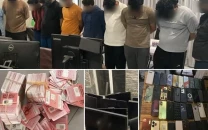
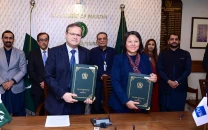
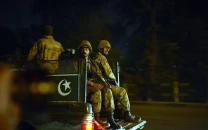

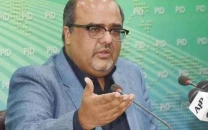
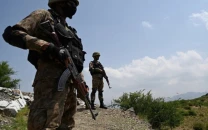












COMMENTS
Comments are moderated and generally will be posted if they are on-topic and not abusive.
For more information, please see our Comments FAQ